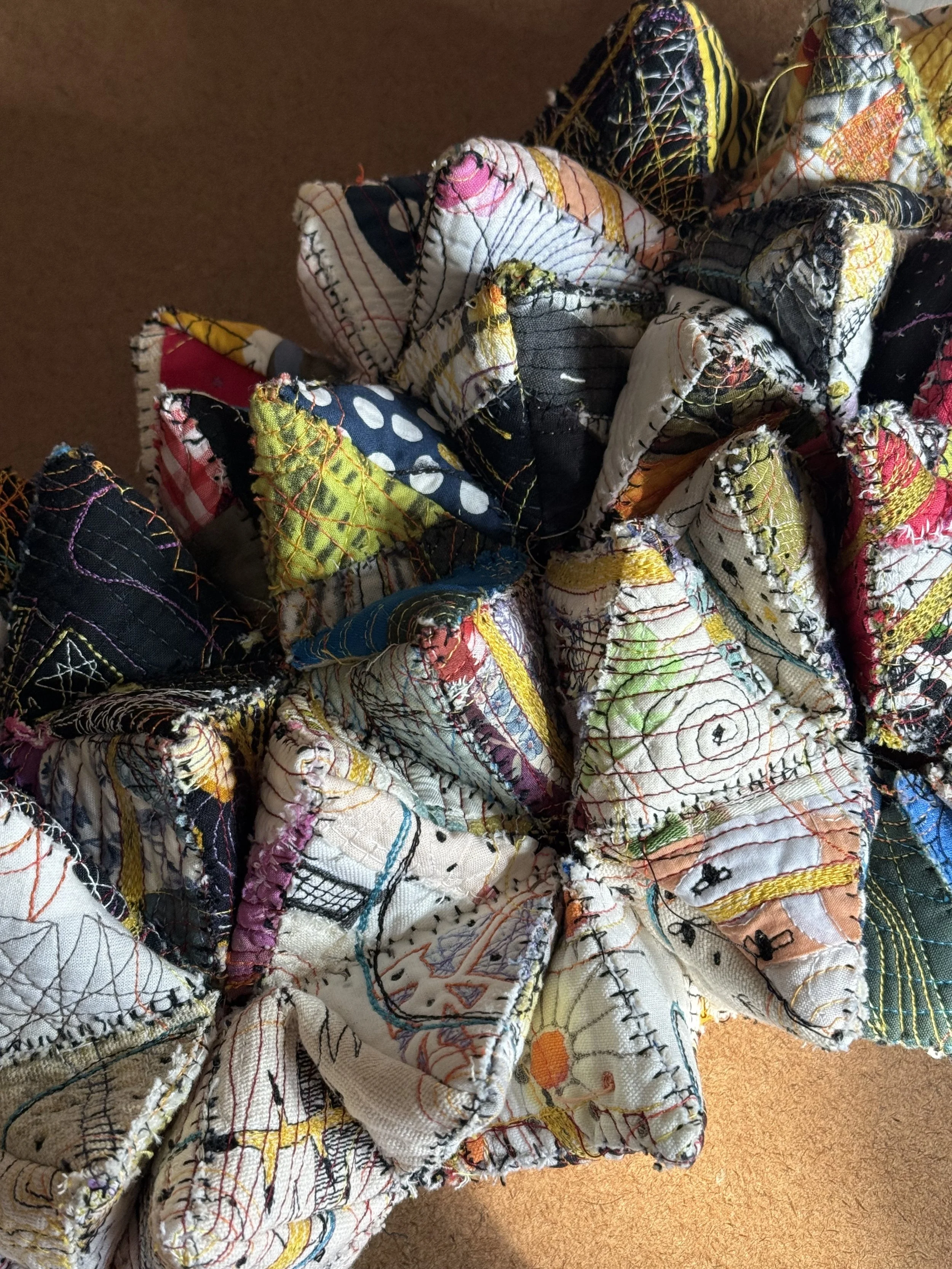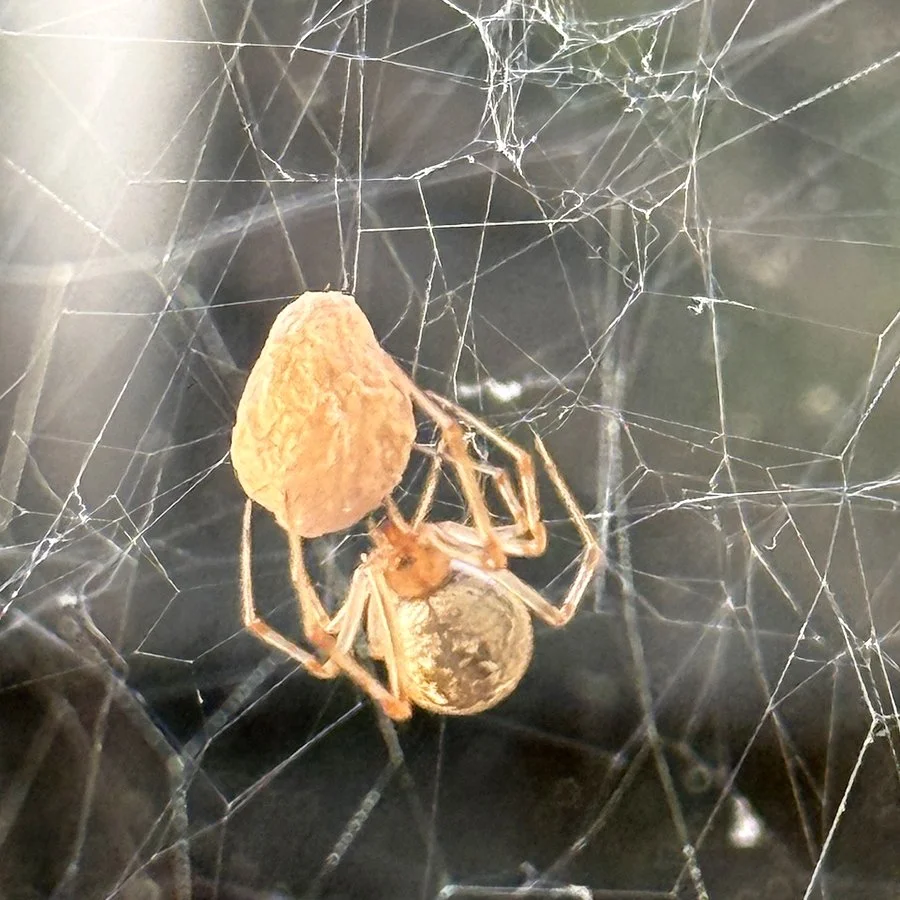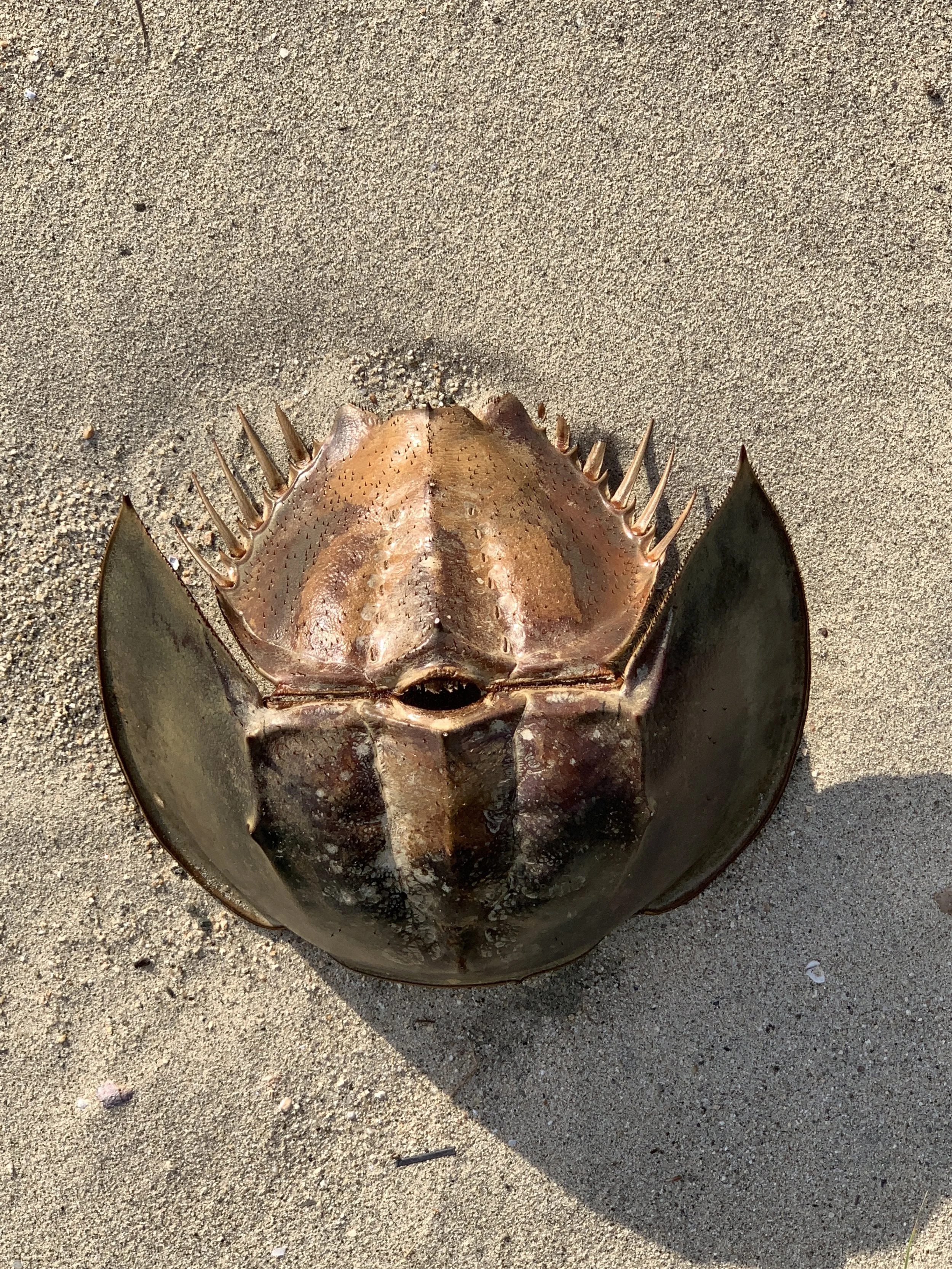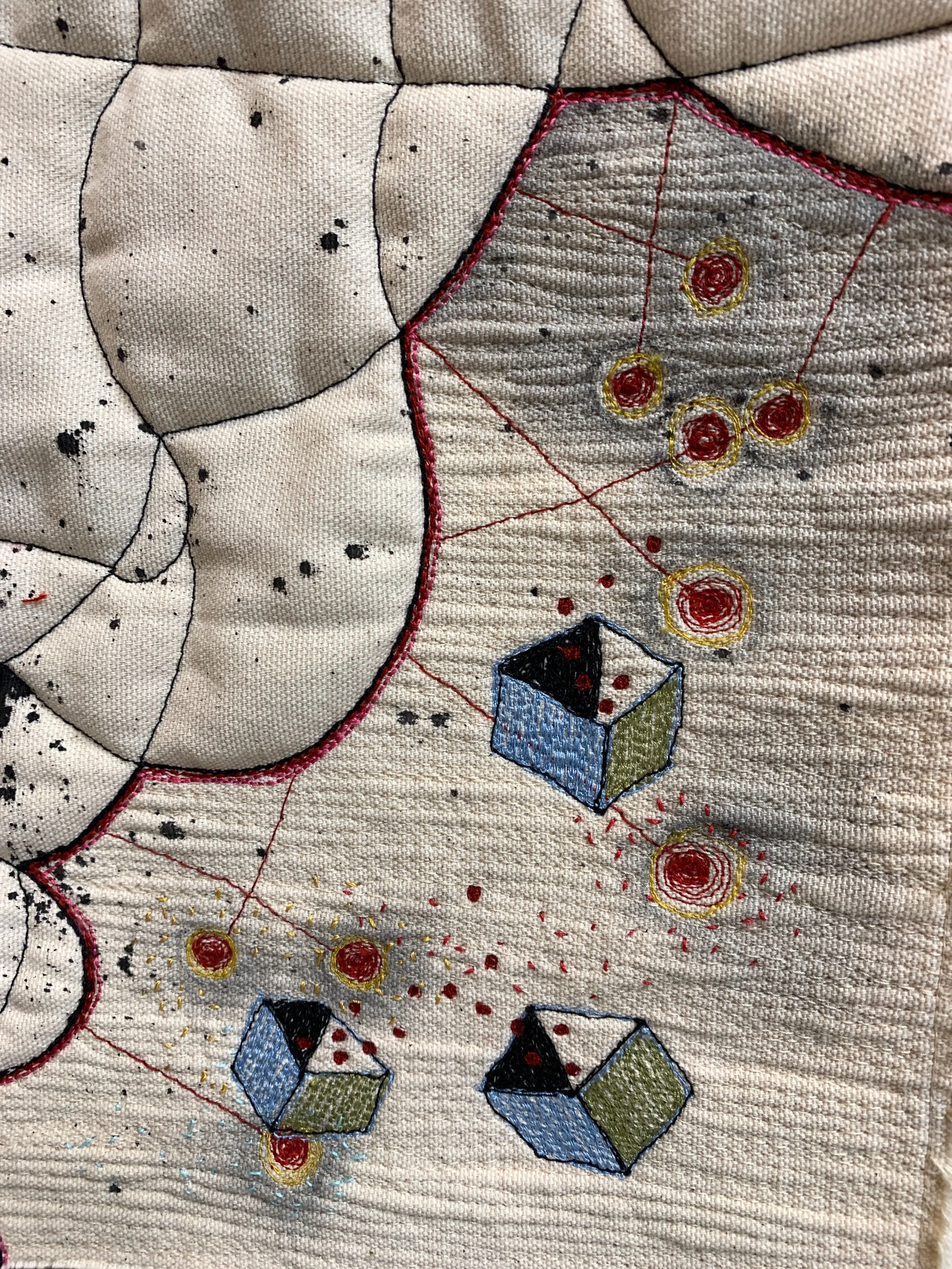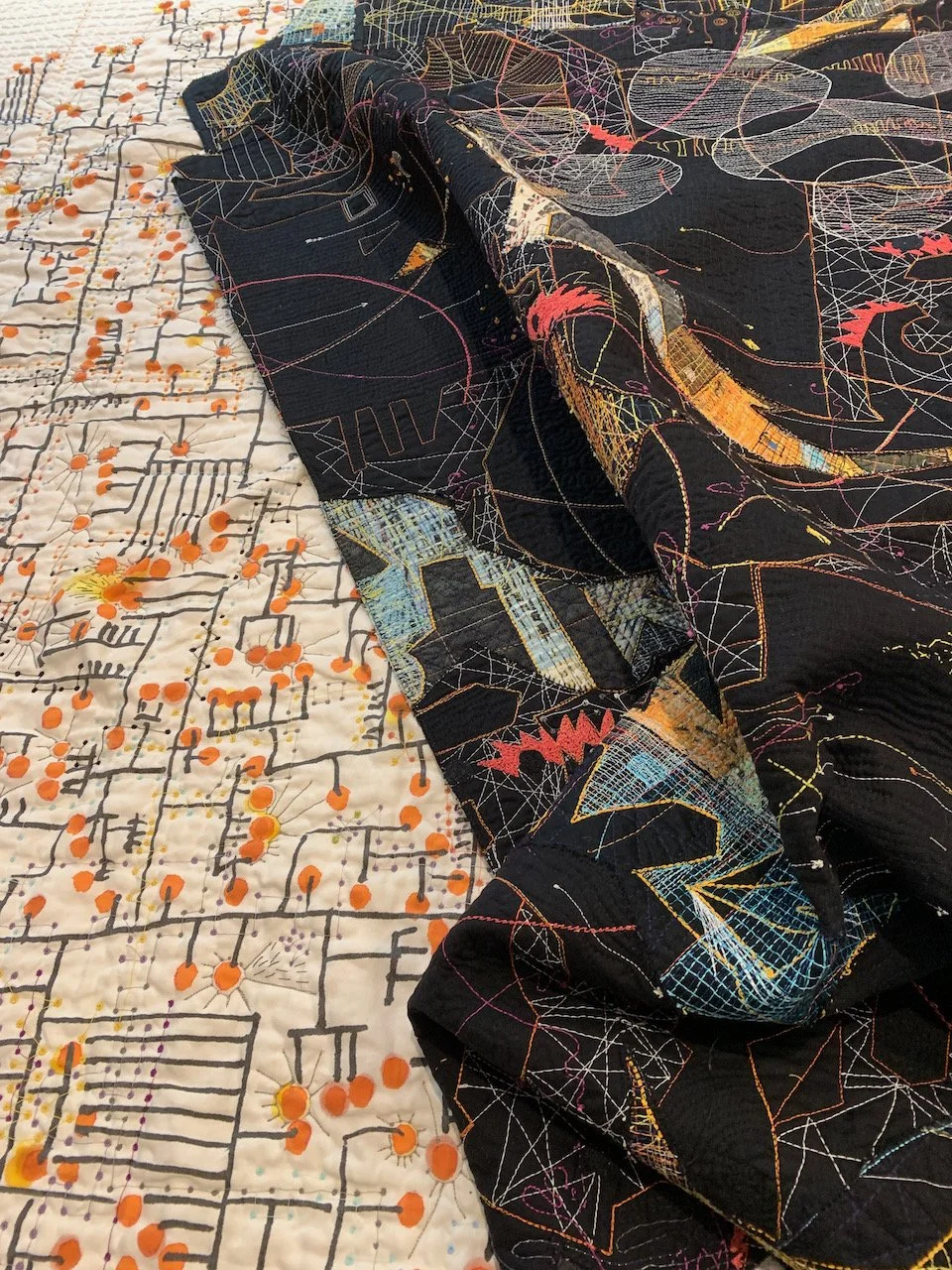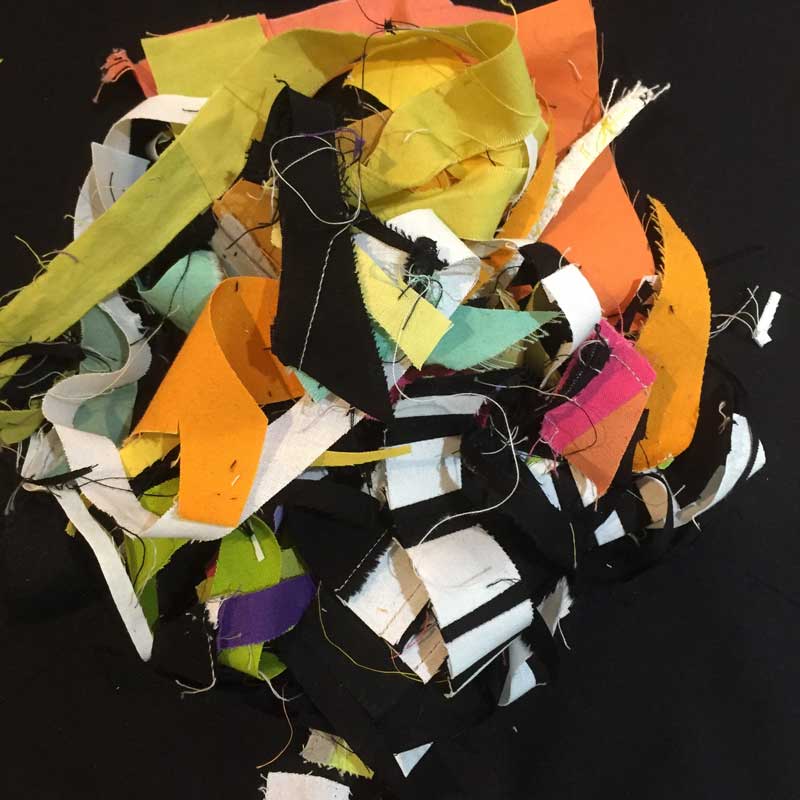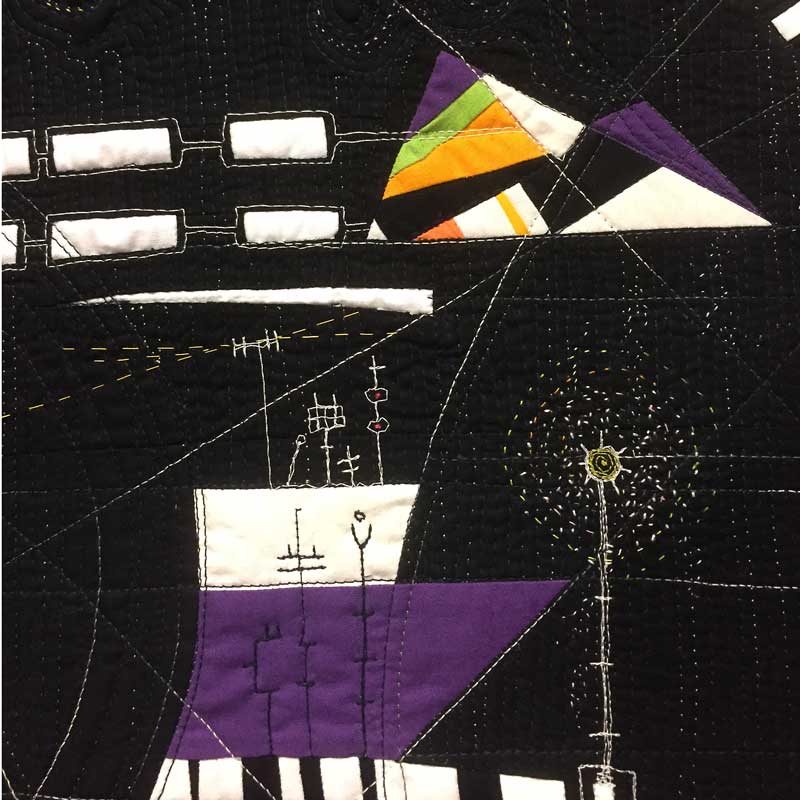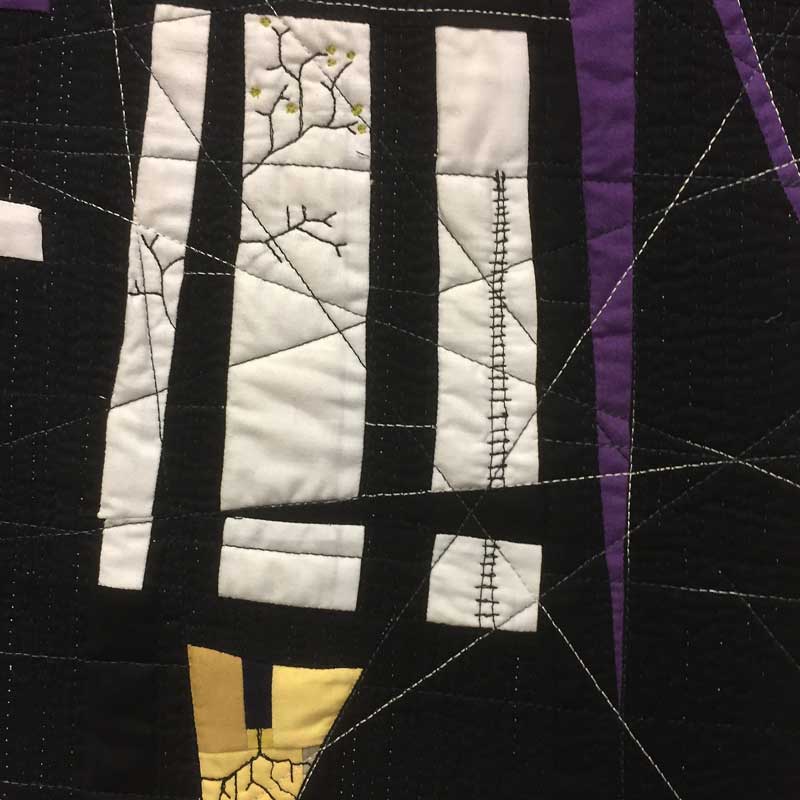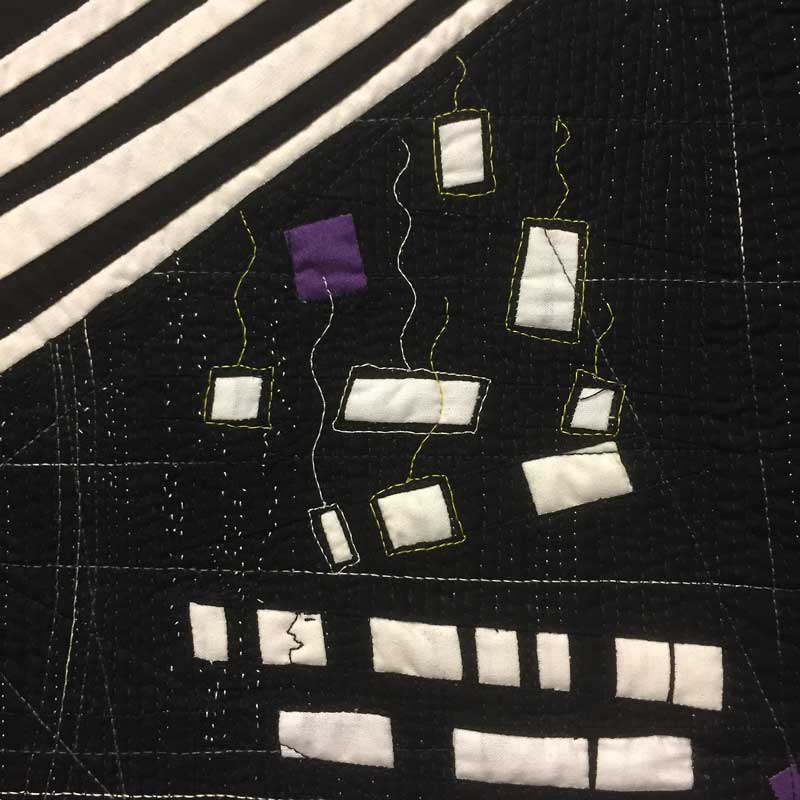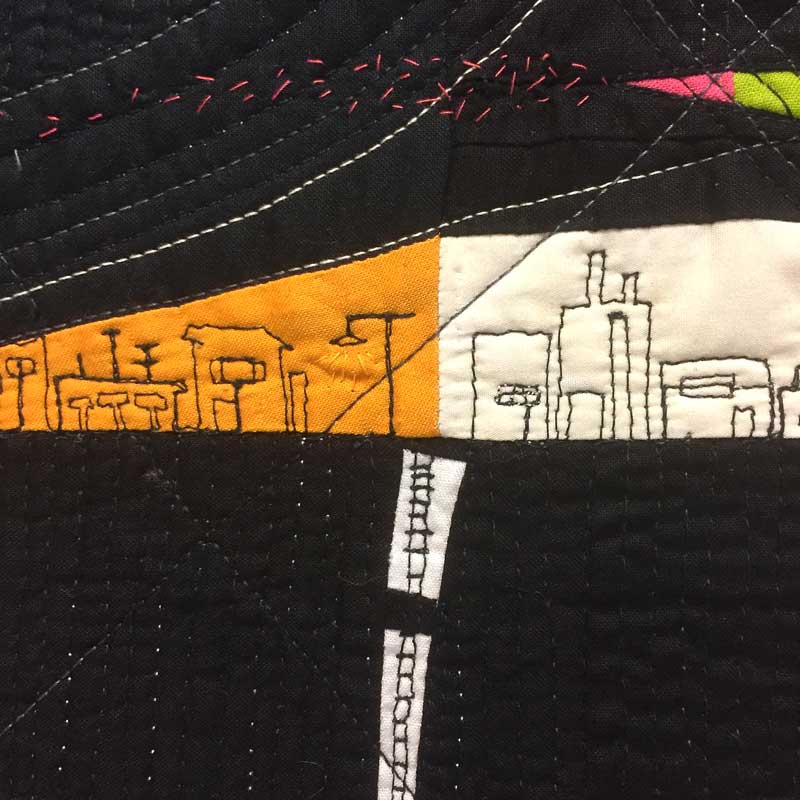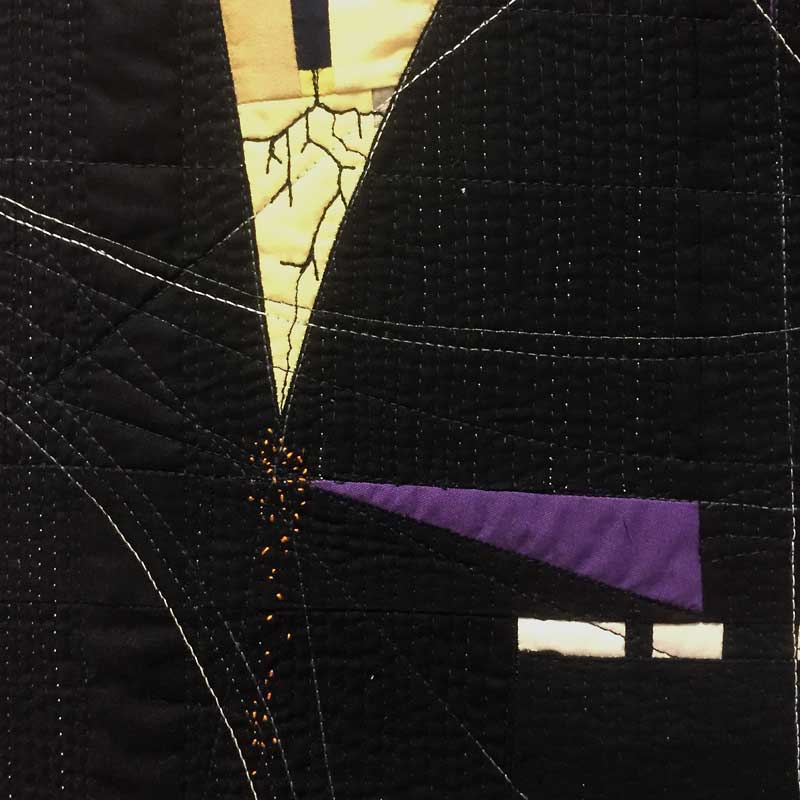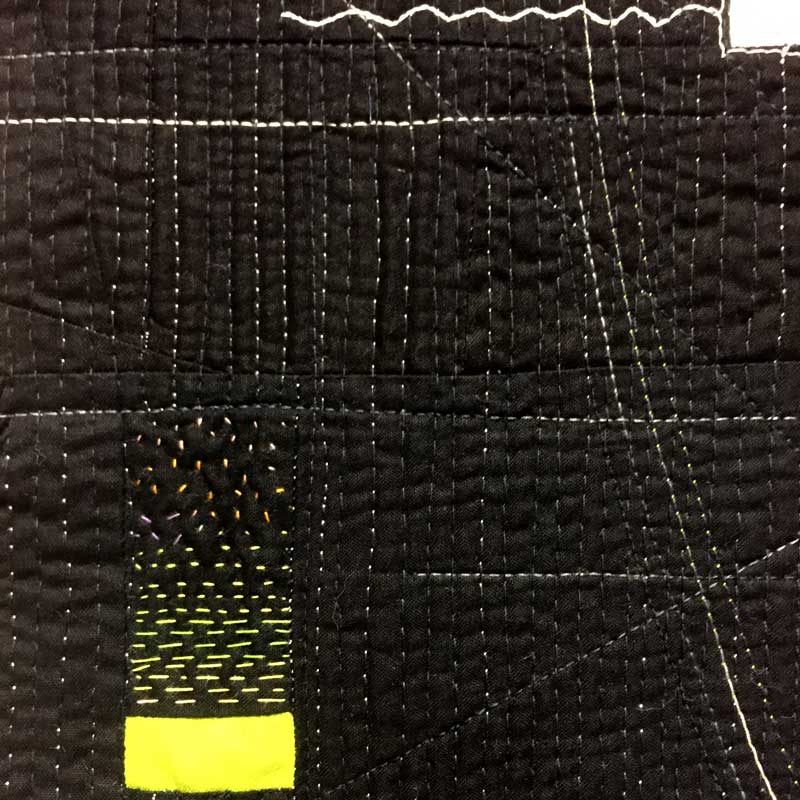I've been thinking about dysfunction. Siblings, political parties, major corporations, government, non-profit agencies — they all experience a little wrack and ruin over time. Personality conflicts, power grabs, bullying, and just plain incompetence can splinter the foundation of any assemblage.
It's in our nature.
So how do we face and focus on mending? It's clear we all need the balm of empathy. We need to find common ground to forge compromise and progress.
Haywire, Paula Kovarik, 2017
We need to clear the air and listen. Speak truth to power and allow for differences.
Ladder to Elsewhere, Paula Kovarik, 2017
I say we act like crabgrass. Move with energy into the cracks. Sew up the middles so that the edges have a base to grow on.
Rough layout for Crabgrass, Paula Kovarik

